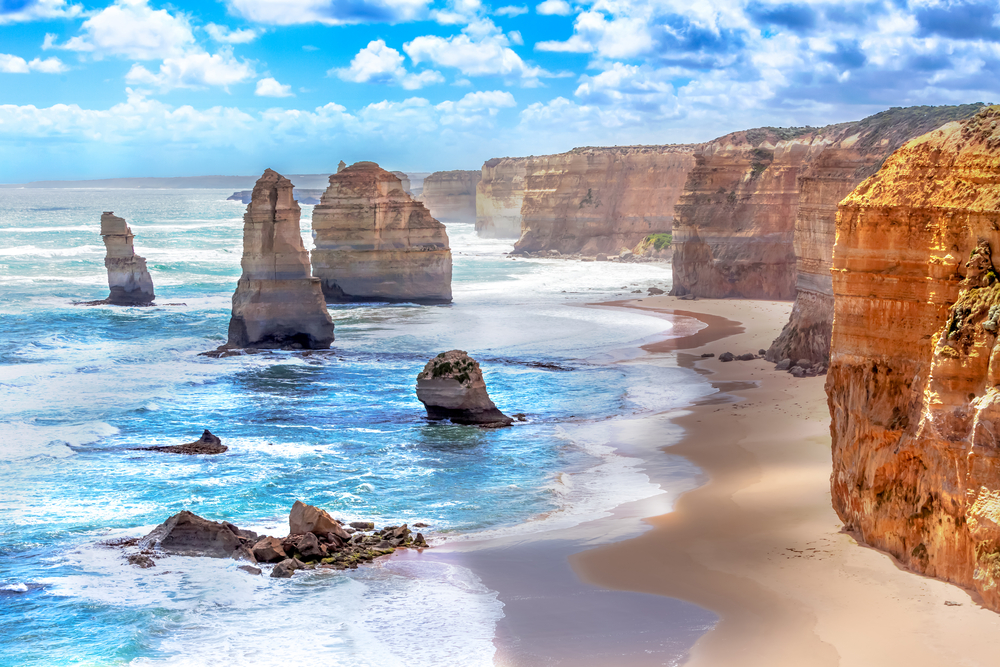
First rule: There are no rules. These resources are completely free and at your disposal. Use as much, or as little, as you want. Study casually, or work to create a portfolio of academic work that will blow the socks off of the educational establishment.
Feel free to adapt the materials for your own purposes. We expect families, business people, backpackers, college students, high school kids, middle aged vacationers, and retirees who are on a late life adventure to take these materials and run with them. We’d be very happy for teachers or travel group leaders to add these materials to their study abroad packets as well.
The nature of open source is collaboration, so please feel free to contribute when you become aware of resources we haven’t listed, or you have project ideas that we haven’t developed. Send us your work and inspire others to reach higher and deeper as they travel!
Our goal with this project is to inspire adventure and further education through experiential learning around the world. Please send us a note and let us know how you used these resources!
Buffet Style Learning
Does the menu look overwhelming? Looking for a formula to use as a skeleton for your studies in Australia?
Choose:
- Two books
- Two films
- Three articles
- One Problem & Solution or Project Option
- One Cultural Assignment
Table of Contents
- Books
- Books for Kids
- Films
- Articles
- Project Options
- Problems & Solutions
- Cultural Assignments
- Create Your Own Coursework
Be sure to check out our resources for Tasmania as well. It’s such a special place that it deserves it’s own page!
Book Recommendations
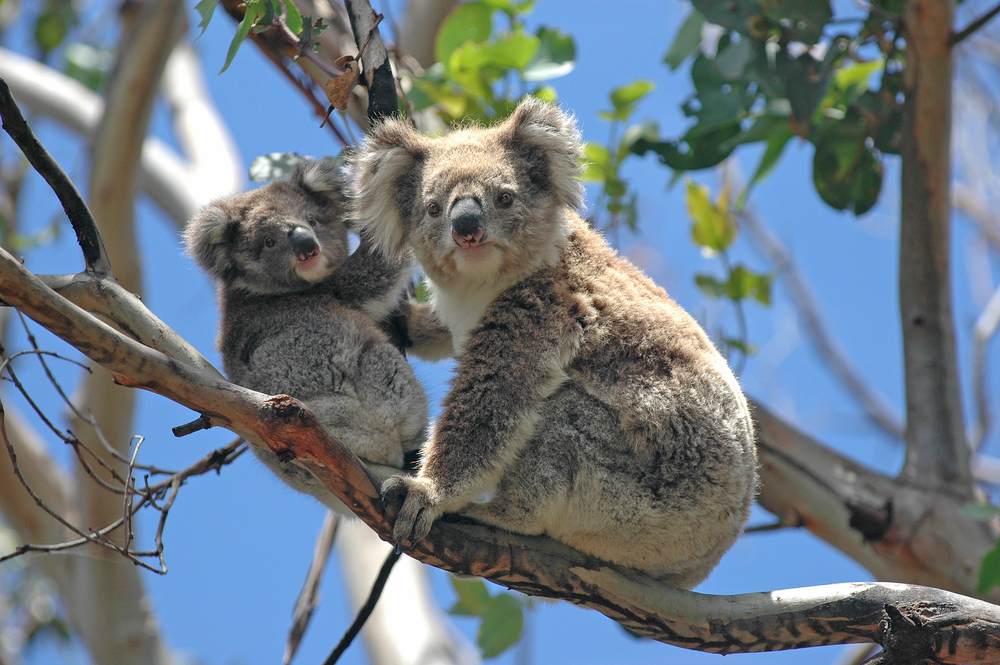
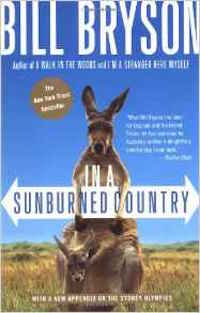 In a Sunburned Country
In a Sunburned Country
by Bill Bryson
Every time Bill Bryson walks out the door, memorable travel literature threatens to break out. His previous excursion along the Appalachian Trail resulted in the sublime national bestseller A Walk in the Woods.
In A Sunburned Country is his report on what he found in an entirely different place: Australia, the country that doubles as a continent, and a place with the friendliest inhabitants, the hottest, driest weather, and the most peculiar and lethal wildlife to be found on the planet. The result is a deliciously funny, fact-filled, and adventurous performance by a writer who combines humor, wonder, and unflagging curiosity.
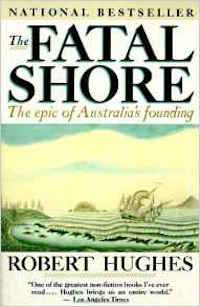 The Fatal Shore: The Epic of Australia’s Founding
The Fatal Shore: The Epic of Australia’s Founding
by Robert Hughes
The history of the birth of Australia which came out of the suffereing and brutality of England’s infamous convict transportation system. With 16 pages of illustrations and 3 maps.
An extraordinary volume–even a masterpiece–about the early history of Australia that reads like the finest of novels. Hughes captures everything in this complex tableau with narrative finesse that drives the reader ever-deeper into specific facts and greater understanding. He presents compassionate understanding of the plights of colonists–both freemen and convicts–and the Aboriginal peoples they displaced. One of the very best works of history I have ever read.
 A Commonwealth of Thieves: The Improbable Birth of Australia
A Commonwealth of Thieves: The Improbable Birth of Australia
by Thomas Keneally
In this spirited history of the remarkable first four years of the convict settlement of Australia, Thomas Keneally offers us a human view of a fascinating piece of history. Combining the authority of a renowned historian with a brilliant narrative flair, Keneally gives us an inside view of this unprecedented experiment from the perspective of the new colony’s governor, Arthur Phillips.
Using personal journals and documents, Keneally re-creates the hellish overseas voyage and the challenges Phillips faced upon arrival: unruly convicts, disgruntled officers, bewildered and hostile natives, food shortages, and disease. He also offers captivating portrayals of Aborigines and of convict settlers who were determined to begin their lives anew. A Commonwealth of Thieves immerses us in the fledgling penal colony and conjures up the thrills and hardships of those first four improbable years.
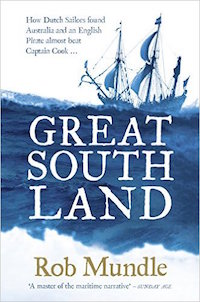 Great South Land: How Dutch Sailors found Australia and an English Pirate almost beat Captain Cook …
Great South Land: How Dutch Sailors found Australia and an English Pirate almost beat Captain Cook …
by Rob Mundle
Australia’s bestselling maritime historian explores the story of how the Dutch discovered Australia. For many, the colonial story of Australia starts with Captain Cook’s discovery of the east coast in 1770, but it was some 164 years before his historic voyage that European mariners began their romance with the immensity of the Australian continent.
Between 1606 and 1688, while the British had their hands full with the Gunpowder Plot and the English Civil War, it was highly skilled Dutch seafarers who, by design, chance or shipwreck, discovered and mapped the majority of the vast, unknown waters and land masses in the Indian and Southern Oceans. This is the setting that sees Rob Mundle back on the water with another sweeping and powerful account of Australian maritime history.
It is the story of 17th-century European mariners – sailors, adventurers and explorers – who became transfixed by the idea of the existence of a Great South Land: ‘Terra Australis Incognita’. Rob takes you aboard the tiny ship, Duyfken, in 1606 when Dutch navigator and explorer, Willem Janszoon, and his 20-man crew became the first Europeans to discover Australia on the coast of the Gulf of Carpentaria.
In the decades that followed, more Dutch mariners, like Hartog, Tasman, and Janszoon (for a second time), discovered and mapped the majority of the coast of what would become Australia. Yet, incredibly, the Dutch made no effort to lay claim to it, or establish any settlements. This process began with British explorer and former pirate William Dampier on the west coast in 1688, and by the time Captain Cook arrived in 1770, all that was to be done was chart the east coast and claim what the Dutch had discovered.
 The Tin Ticket: The Heroic Journey of Australia’s Convict Women
The Tin Ticket: The Heroic Journey of Australia’s Convict Women
by Deborah J. Swiss
The Tin Ticket takes readers to the dawn of the nineteenth century and into the lives of three women arrested and sent into suffering and slavery in Australia and Tasmania-where they overcame their fates unlike any women in the world. It also tells the tale of Elizabeth Gurney Fry, a Quaker reformer who touched all their lives. Ultimately, this is a story of women who, by sheer force of will, became the heart and soul of a new nation.
 A Shorter History of Australia: Further Revised & Updated
A Shorter History of Australia: Further Revised & Updated
by Geoffrey Blainey
After a lifetime of research and debate on Australian and international history, Geoffrey Blainey is well-placed to introduce us to the people who have played a part and to guide us through the events that have created the Australian identity: the mania for spectator sport; the suspicion of the tall poppy; the rivalries of Catholic and Protestant, Sydney and Melbourne, new and old homelands and new and old allies; the conflicts of war abroad and race at home; the importance of technology; defining the outback; the rise and rise of the mining industry; the recognition of our Aboriginal past and Native Title; and the successes and failures of the nation.
For this enlarged edition Blainey has rewritten or expanded on various episodes and themes and updated relevant matter. He also describes significant events and trends of the early-20th century. A timeline of major events in Australian history is also included.
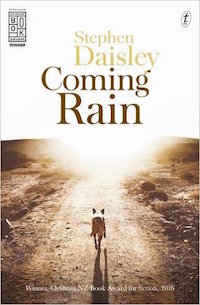 Coming Rain
Coming Rain
by Stephen Daisley
Western Australia, the wheatbelt. Lew McLeod has been travelling and working with Painter Hayes since he was a boy. Shearing, charcoal burning—whatever comes. Painter made him his first pair of shoes. It’s a hard and uncertain life, but it’s the only one he knows.
But Lew’s a grown man now. And with this latest job, shearing for John Drysdale and his daughter Clara, everything will change.
Stephen Daisley writes in lucid, rippling prose of how things work, and why; of the profound satisfaction in hard work done with care, of love and friendship and the damage that both contain.
Both brutal and poignant, this is an unforgettable novel for fans of Cormac McCarthy, Richard Ford, and Kent Haruf.
Stephen Daisley has worked on sheep and cattle stations, on oil and gas rigs, and driving trucks. His first novel, Traitor, won the 2011 Prime Minister’s Literary Award.
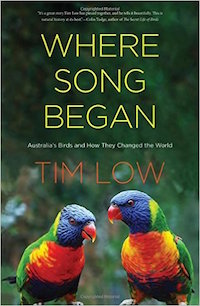 Where Song Began: Australia’s Birds and How They Changed the World
Where Song Began: Australia’s Birds and How They Changed the World
by Tim Low
An authoritative and entertaining exploration of Australia’s distinctive birds and their unheralded role in global evolution
Renowned for its gallery of unusual mammals, Australia is also a land of extraordinary birds. But unlike the mammals, the birds of Australia flew beyond the continent’s boundaries and around the globe many millions of years ago. This eye-opening book tells the dynamic but little-known story of how Australia provided the world with songbirds and parrots, among other bird groups, why Australian birds wield surprising ecological power, how Australia became a major evolutionary center, and why scientific biases have hindered recognition of these discoveries.
From violent, swooping magpies to tool-making cockatoos, Australia’s birds are strikingly different from birds of other lands—often more intelligent and aggressive, often larger and longer-lived. Tim Low, a renowned biologist with a rare storytelling gift, here presents the amazing evolutionary history of Australia’s birds. The story of the birds, it turns out, is inseparable from the story of the continent itself and also the people who inhabit it.
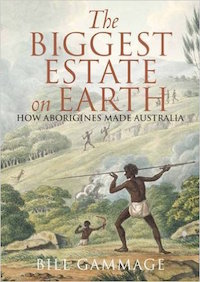 The Biggest Estate on Earth: How Aborigines Made Australia
The Biggest Estate on Earth: How Aborigines Made Australia
by Bill Gammage
Reveals the complex, country-wide systems of land management used by Aboriginal people in presettlement Australia
Across Australia, early Europeans commented again and again that the land looked like a park, with extensive grassy patches and pathways, open woodlands, and abundant wildlife. Bill Gammage has discovered this was because Aboriginal people managed the land in a far more systematic and scientific fashion than most people have ever realized. For more than a decade, he has examined written and visual records of the Australian landscape.
He has uncovered an extraordinarily complex system of land management using fire, the life cycles of native plants, and the natural flow of water to ensure plentiful wildlife and plant foods throughout the year. Aboriginal people spent far less time and effort than Europeans in securing food and shelter, and this book reveals how. Once Aboriginal people were no longer able to tend their country, it became overgrown and vulnerable to the hugely damaging bushfires Australians now experience. With details of land-management strategies from around Australia, this book rewrites the history of the continent, with huge implications for today.
 Tracks: A Woman’s Solo Trek Across 1700 Miles of Australian Outback
Tracks: A Woman’s Solo Trek Across 1700 Miles of Australian Outback
by Robyn Davison
Robyn Davidson’s opens the memoir of her perilous journey across 1,700 miles of hostile Australian desert to the sea with only four camels and a dog for company with the following words: “I experienced that sinking feeling you get when you know you have conned yourself into doing something difficult and there’s no going back.”
Enduring sweltering heat, fending off poisonous snakes and lecherous men, chasing her camels when they get skittish and nursing them when they are injured, Davidson emerges as an extraordinarily courageous heroine driven by a love of Australia’s landscape, an empathy for its indigenous people, and a willingness to cast away the trappings of her former identity. Tracks is the compelling, candid story of her odyssey of discovery and transformation.
“An unforgettably powerful book.”—Cheryl Strayed, author of Wild
 Follow the Rabbit-Proof Fence
Follow the Rabbit-Proof Fence
by Doris Pilkington
This extraordinary story of courage and faith is based on the actual experiences of three girls who fled from the repressive life of Moore River Native Settlement, following along the rabbit-proof fence back to their homelands. Assimilationist policy dictated that these girls be taken from their kin and their homes in order to be made white.
Settlement life was unbearable with its chains and padlocks, barred windows, hard cold beds, and horrible food. Solitary confinement was doled out as regular punishment. The girls were not even allowed to speak their language. Of all the journeys made since white people set foot on Australian soil, the journey made by these girls born of Aboriginal mothers and white fathers speaks something to everyone.
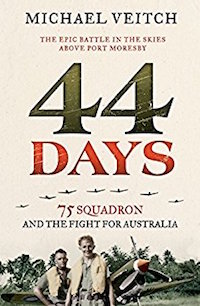 44 Days: 75 Squadron and the Fight for Australia
44 Days: 75 Squadron and the Fight for Australia
by Michael Vetch
The epic World War II story of Australia’s 75 Squadron – and the 44 days when these brave and barely trained pilots fought alone against the Japanese.
In March and April 1942, RAAF 75 Squadron bravely defended Port Moresby for 44 days when Australia truly stood alone against the Japanese. This group of raw young recruits scrambled ceaselessly in their Kittyhawk fighters to an extraordinary and heroic battle, the story of which has been left largely untold.
The recruits had almost nothing going for them against the Japanese war machine, except for one extraordinary leader named John Jackson, a balding, tubby Queenslander – at 35 possibly the oldest fighter pilot in the world – who said little, led from the front, and who had absolutely no sense of physical fear.
Time and time again this brave group were hurled into battle, against all odds and logic, and succeeded in mauling a far superior enemy – whilst also fighting against the air force hierarchy. After relentless attack, the squadron was almost wiped out by the time relief came, having succeeded in their mission – but also paying a terrible price.
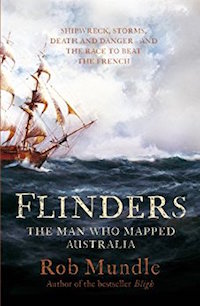 Flinders: The Man Who Mapped Australia
Flinders: The Man Who Mapped Australia
by Robert Mundle
Matthew Flinders was the first to circumnavigate and chart the treacherous Terra Australis coastline; he is the man who put Australia on the map.
Bundle brings to life the fascinating story of this exceptional maritime explorer, from the drama of epic voyages and devastating shipwrecks; his part in the naming of Australia; his cruel imprisonment by the French on Mauritius for six long and harrowing years; the heartbreaking separation from his beloved wife; and the comfort he got from his loyal cat, Trim; to his tragic death at just forty, before ever seeing the publication of his life’s work. Flinders is a true hero whose name is forever woven into the fabric of Australian history.
 
Kids Book Recommendations

 Not For Parents Australia: Everything You Ever Wanted to Know
Not For Parents Australia: Everything You Ever Wanted to Know
by Klay Lamprey.
This is not a guidebook. And it is definitely ‘not-for-parents’.
It is the real, inside story about one of the world’s most exciting countries – Australia. In this book you’ll hear fascinating tales about toothy sharks, giant rocks and snappy crocs, bushranger baddies and explorers galore. Check out cool stories about a famous coat-hanger, underground hotels, a super-fast horse and a very rough race. You’ll find flying doctors and flying fruit flies, flesh-eating spiders and thieving convicts.
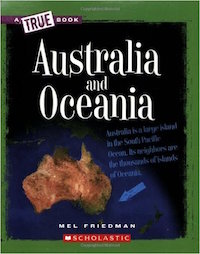 Australia and Oceania
Australia and Oceania
by Mel Friedman
This is a great little book not only for kids but for adults who want to know a little about Australia and surroundings. The pictures were good, and the facts and figures were presented simply with no fuss. It really is a little gem of a book. –Susan Jane
– Clean new design for easy readability and comprehension
– Updated text presented in a lively, continuous narrative
– New center-spread sidebar feature presenting material in a fun, creative way
– Excellent age-appropriate introduction to curriculum-relevant subjects
– Important Words glossary clarifies subject-specific vocabulary
– Resources section encourages independent study
– Index makes navigating subject matter easy
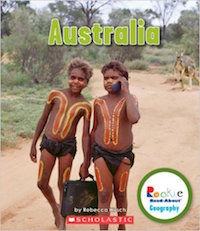 Australia (Rookie Read-About Geography)
Australia (Rookie Read-About Geography)
by Hirsch Rebecca Eileen & Baden Offord
Presents a simple introduction to Australia, focusing on its geographical features, people and native animals.
This book is just what I was looking for. It does a great job of briefly touching on the major things about Australia. It also has some great pictures. My son has really enjoyed it. – Elizabeth Mackey
 D is for Down Under: An Australia Alphabet
D is for Down Under: An Australia Alphabet
by Devin Scillian
What country holds the title as the world’s smallest continent and yet the world’s largest island? I stands for island, but one that’s not too small. Our island is enormous. Just try to see it all! There’s no place else quite like it; that is clearly true. Australia is a continent, but it’s an island, too. Originally founded as a penal colony, Australia has long been known for its contrasts (think: wild outback and sophisticated Sydney Opera House).
Accompanied by vibrant colorful artwork, D is for Down Under: An Australia Alphabet captures the spirit of this proud country and its many treasures, natural and man-made. Visit spectacular Sydney Harbor, try your hand as a jackaroo working a sheep station, or just sit back and enjoy a Vegemite sandwich. Below the starry night glitter of the Southern Cross constellation, Australia’s “down under” wonders shine brightly
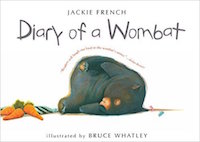 Diary of a Wombat
Diary of a Wombat
by Jackie French & Bruce Whatley
This is an absolutely hilarious book about a uniquely Australian animal.
Wombats are cuddly-looking, slow-moving Australian animals. Their favorite activities are eating, sleeping, and digging holes. Here, in the words of one unusually articulate wombat, is the tongue-in-cheek account of a busy week; eating, sleeping, digging holes . . . and training its new neighbors, a family of humans, to produce treats on demand.
This entertaining book, with its brief, humorous text and hilarious illustrations, will endear the wombat to young children, who may recognize in the determined furry creature some qualities that they share.
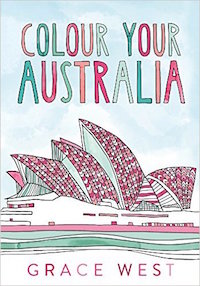 Colour Your Australia
Colour Your Australia
by Grace West
From Uluru to the Daintree, the Todd River Regatta to the Birdsville Races, the Sydney Opera House to the MCG, take a magical adventure through our favorite Australian sights and scenes. With beautifully detailed illustrations, traveling through these pages will relax and expand your mind. See the unique landscape from a whole new angle, full of wonder and joy, in Grace West’s Color Your Australia.
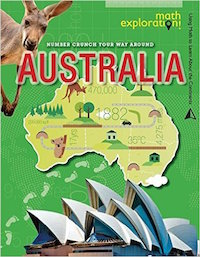 Number Crunch Your Way Around Australia (Math Exploration: Using Math to Learn about the
Number Crunch Your Way Around Australia (Math Exploration: Using Math to Learn about the
by Joanne Randolph
Australia is a land of extremes from the bustling city of Sydney to the wild lands of the outback. Learning about this land allows readers to explore important topics in both social studies and math curricula. As they read, they use fun facts and stats to solve math problems, which can then be checked with a comprehensive answer key.
Readers also explore colorful maps of the continent that are designed to enhance their geography skills. Colorful photographs of life in Australia are presented in an eye-catching way designed to hold the interest of readers.
 Australia’s Great Barrier Reef Coloring Book
Australia’s Great Barrier Reef Coloring Book
by Bobo’s Children Activity Books
There is so much to admire of the Great Barrier Reef in Australia! In order to encourage appreciation of this natural gift from Nature and to promote awareness of its environmental needs, you should give your child a copy of this coloring book. Talk to your child about the Great Barrier Reef as he/she works on the images. Information will be better absorbed when learned through a hands-on activity.
 Where Is the Great Barrier Reef?
Where Is the Great Barrier Reef?
by Nico Medina
In this Where Is? title, kids can explore the Great Barrier Reef—big enough to be seen from space but made up of billions of tiny living organisms.
The Great Barrier Reef, off the coast of Australia, is the world’s largest coral reef system. Stretching more than 1,400 miles, it provides a home to a wide diversity of creatures. Designated a World Heritage Site, the reef is suffering from the effects of climate change but this fascinating book shows this spectacular part of our planet.
Film Recommendations

Australia: A Continent Adrift
“Australia. A Continent Adrift” full documentary in which we discover how animals that populated this part of the supercontinent Gondwana have evolved as to what the Australian continent adrift in the ocean.
The story of the inhabitants of this Terra Australis can be traced back to the distant days when all the continents of the southern hemisphere were one. The world was then a warmer, and more humid place, in which enormous dinosaurs ruled over a zoology in permanent evolution. The remains of that universal jungle can still be seen in the north east of Australia, and are now home to the descendents of the long extinct dinosaurs.
National Geographic Channel World’s Deadliest Animals Australia
Poverty in Australia
Australia’s economy – and unemployment rate – might be the envy of countries around the world, but it doesn’t mean poverty and unemployment have been eradicated.
Welfare agencies say that many individuals and families are just one or two pay cheques away from financial disaster and homelessness. Worse still, with the mining boom coming off the boil, experts predict more people will find themselves out of work.
The men of the Fifth World
The aboriginal culture of Australia, includes a large number of tribes inhabiting the oceanic continent before the arrival of the white man. But all that rich culture is doomed to survive in stocks in which its people are destined to extinction.
In this episode one of the elders that preserve aboriginal culture will show the most important elements of a culture that struggles not to disappear.
First People: Aboriginal Australians
In a genetic study in 2011, researchers found evidence, in DNA samples taken from strands of Aboriginal people’s hair, that the ancestors of the Aboriginal population split off from the ancestors of the European and Asian populations between 65,000 and 75,000 years ago—roughly 24,000 years before the European and Asian populations split off from each other. These Aboriginal ancestors migrated into South Asia and then into Australia, where they stayed, with the result that, outside of Africa, the Aboriginal peoples have occupied the same territory continuously longer than any other human populations. These findings suggest that modern Aboriginal peoples are the direct descendants of migrants who left Africa up to 75,000 years ago.
Yellow Crazy Ants and Red Crabs on Christmas Island
Australian Aboriginal Mythology – History Channel
Dreamtime (also dream time, dream-time) is a term for the animist framework and symbol system of Australian Aboriginal mythology, introduced by anthropologist A. P. Elkin in 1938 and popularised by anthropologist William Edward Hanley Stanner and others from the 1970s for a concept of “time out of time”, or “everywhen”, inhabited by ancestral figures, often of heroic proportions or with supernatural abilities, but not considered “gods” as they do not control the material world and are not worshipped.
Coober Pedy – Opal Capital of the World
Coober Pedy is a town in northern South Australia. The town is sometimes referred to as the “opal capital of the world” because of the quantity of precious opals that are mined there. Coober Pedy is renowned for its below-ground residences,
called “dugouts”, which are built in this fashion due to the scorching daytime heat. The name “Coober Pedy” comes from the local Aboriginal term kupa-piti, which means “white man’s hole”.
Opal was found in Coober Pedy on 1 February 1915; since then the town has been supplying most of the world’s gem-quality opal. Coober Pedy today relies as much on tourism as the opal mining industry to provide the community with employment and sustainability. Coober Pedy has over 70 opal fields and is the largest opal mining area in the world.
Coober Pedy – no village, no buildings, no roads, just desert, mountains dotted with boulders. A bizarre lunar landscape, but for opal seekers is the most exciting place on earth, where again every day is the true challenge, happiness and luck just a shovel width apart and where life is defined by two words: winners and losers. Coober Pedy, grab your hat, throw it into the air and where it lands start digging !
Land Beyond Time – Australia
A breathtaking journey through the exotic, surreal and dramatic natural environment of Australia.
Australia’s Transgender Pre-Teens
Being Me: The story of the 9 year-old Australian girl undergoing elective gender-realignment.
Through candid interviews with transgender youths like Isabelle Langley, 10, Being Me takes us into the world of young people who feel like their true gender is not their biological one. For a generation raised in a world of freely available information, the veil has been lifted on this previously taboo topic. Like Isabelle, inspired by transgender activist and Youtube sensation Jazz Jennings, they are coming out to their families and friends and demanding to be accepted for who they are.
Utopia – A film by John Pilger
This is one of the most extraordinary films about Australia. This is Utopia, an epic production by the Emmy and Bafta winning film-maker and journalist John Pilger.
Utopia is a vast region in northern Australia and home to the oldest human presence on earth. “This film is a journey into that secret country,” says Pilger in Utopia. “It will describe not only the uniqueness of the first Australians, but their trail of tears and betrayal and resistance – from one utopia to another.”
Austraila’s Great Barrier Reef
Few biological wonders can rival those in Australia’s Great Barrier Reef for spectacular beauty, and few filmmakers can rival National Geographic’s lush photography.
The giant colonial organism, though endangered by pollution and other threats, still spawns once each year in a gorgeous frenzy of new growth. It’s a fertile time for all of the creatures dwelling in and around the reef structure, and the National Geographic cameras capture barracuda, bright damselfish, giant marine worms, and many other lovely and fascinating neighbours.
The Rabbit in Australia
The story of the European rabbit in Australia must surely be one of the most amazing examples of an animal’s ability to colonise a new land. Just how and why this happened makes a fascinating study.
This film traces the history of the rabbit from its evolutionary home in the Mediterranean through to its introduction into Australia as a source of food and sport and as a reminder of the English countryside. The rabbit population explosion began about 1860, and within 30 years, rabbit numbers had reached plague proportions over large parts of southern Australia. The long battle to control the rabbit had begun.
Australia
Set in northern Australia before World War II, an English aristocrat who inherits a sprawling ranch reluctantly pacts with a stock-man in order to protect her new property from a takeover plot. As the pair drive 2,000 head of cattle over unforgiving landscape, they experience the bombing of Darwin, Australia, by Japanese forces firsthand. Nicole Kidman & Hugh Jackman
Rabbit Proof Fence
Crocodile Dundee (1986)
Original theatrical trailer for the 1986 film “Crocodile Dundee.” Starring Paul Hogan, Linda Kozlowski, John Meillon, David Gulpilil, Reginald VelJohnson. Directed by Peter Faiman.
Gallipoli (1981)
Mel Gibson & Mark Lee
Somersault (2004)
Angsty teenage romance comes to the snowy fields of Jindabyne, New South Wales in Somersault. Yes, they have snow in Australia. Moving on, this indie flick – directed by Cate Shortland – bowled critics over with fine, sexually charged performances from Abbie Cornish and Sam Worthington as 16 year old runaway Heidi and farmer boy Joe. – 25 Best Australian Movies
Ned Kelly (2003)
Heath Ledger plays the infamous Australian outlaw who donned a suit of armour for his showdown with the authorities. A solid Western that explores the life of an Australian legend from both sides of the law – and it’s better than other cinematic treatments of Australia’s national myth. Rather Heath Ledger than Mick Jagger – who played Kelly in a 1970 film – after all.- 25 Best Australian Movies
The Man From Snowy River
In 1880s Australia when young Jim Craig’s father dies Jim takes a job at the Harrison cattle ranch and he is forced to become a man.
Didgeridoo, Aboriginal Instrument, Australia
The haunting sounds of the DIDGERIDOO can carry for miles. Watch and listen to these two talented masters as they produce a variety of incredible sounds with a backdrop of the ocean!
 
Article Recommendations
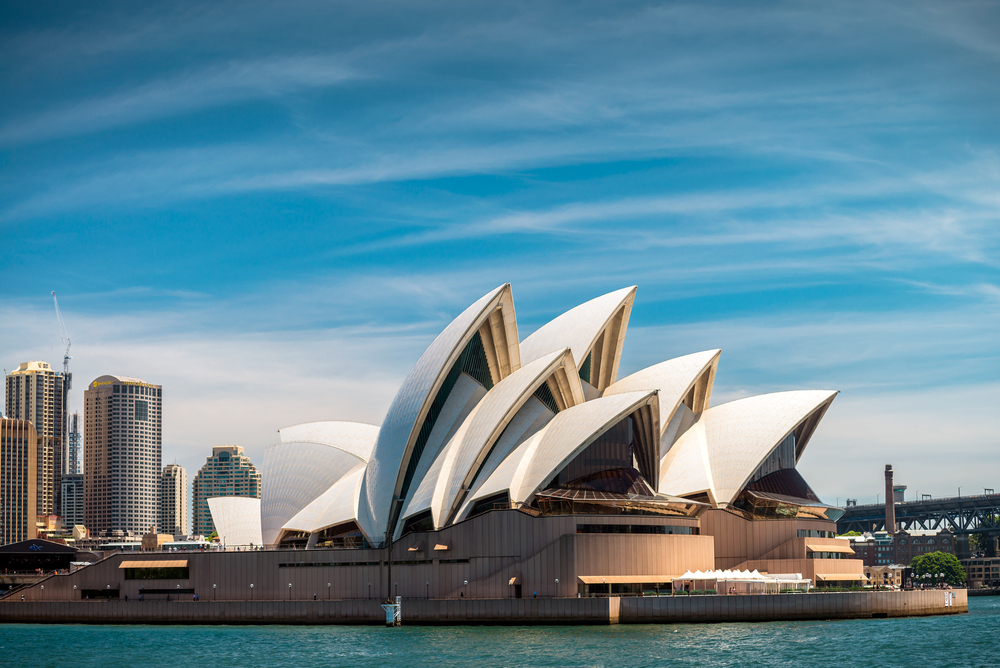
Australia Asylum: Why is it Controversial? – BBC
From Boom to Bust in Australia’s Mining Towns – BBC
Australia’s Historic Opal Mining Dying Off – ABC
China Plows Big Money Into Australian Agriculture – Wall Street Journal
Australia Turns to Agriculture as Mining Boom Cools – BBC
How much of Australia’s Farmland is Owned by Foreign Companies? – Guardian
Coalition Urged to Regulate Indigenous Hunting of Endangered Animals – Guardian
How Aborigines Could Solve Australia’s Bushfire Problem – BBC
Light-skinned indigenous people face discrimination: Michelle Lovegrove – CBC
Nicole Kidman: Didgeridoo vs. Yikadi – Guardian
UN: Children in “Life Threatening” Conditions at Nauru – Al Jazeera
Australia’s Jihadis – Al Jazeera
Boxing Rehabilitation Program Lowers Crime Rates – Al Jazeera
Project Options:
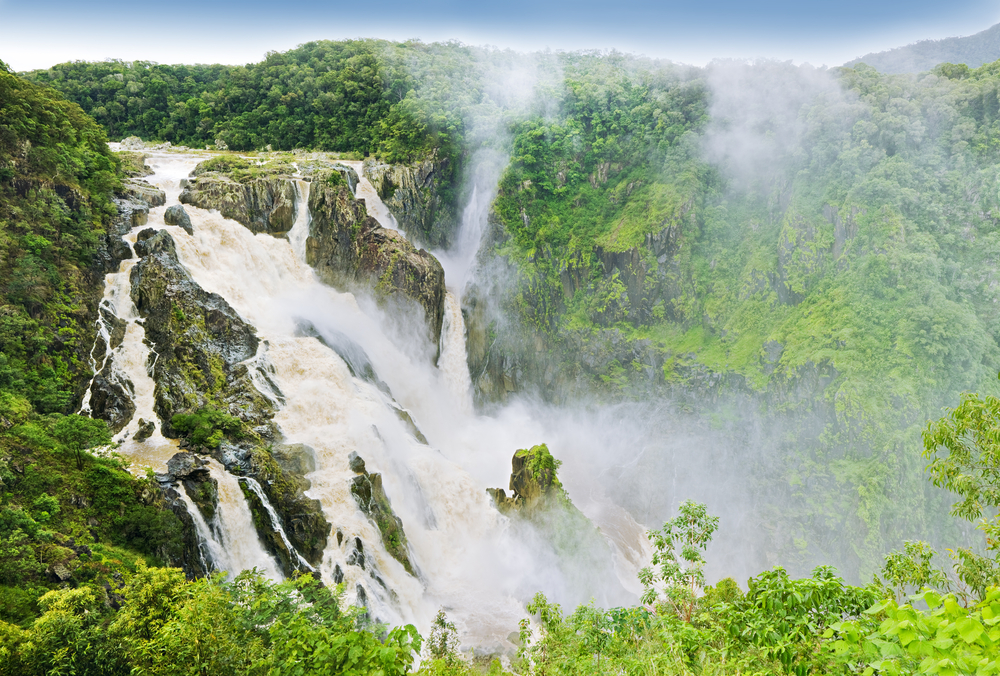
History
Australia has a fascinating history, from it’s long aboriginal past, to the European arrival and establishment of the island as a penal colony for England, to the modern struggle for balance between the two worlds.
Some possibilities for further study:
- Arrival of the Aborigines
- Lake Mungo Excavations
- Arrival of Explorers (hint, Europeans were not first!)
- Dutch Explorers
- British Explorers
- Colonial Establishment
- Convicts as Colonizers
- Bush Rangers
- Federation
- The Great War (WW1)
- Julia Gillard
- Royal Flying Doctor Service
Removal of Aboriginal Children
Between 1905 and 1969 the Australian government had in place a policy of removing mixed race Aboriginal or Torres Strait Islander children from their families, based on the believe that the aboriginal race was dying out and in Euro-Australian superiority. It is estimated that at least 100,000 children were removed from their mothers during this period. These have become known as the Stolen Generations.
Do some research on the intentions and the realities behind this initiative. Read the stories of the children who were removed. Investigate the Bringing Them Home report. How is Australia seeking to make reparations for the wrongs committed? What have been the long term effects in the Aboriginal community?
Gold Rush: Then & Now
There have been a series of gold rushes in Australia, beginning in 1851. How have they affected Australia? Visit Ballarat and learn about the history of the gold rush and it’s effect on the town as well as it’s effect on culture. What is gold mining like in Australia now? It’s a primary industry and key to the economy of Australia, but it’s also been an industry in decline for the last several years. Examine the role of gold in the history and present of Australia.
Civil Rights
The treatment of Aboriginal people has been, and continues to be, a significant issue in Australia. In the 1960s rights for indigenous persons began to expand, including the right to vote. However it was not until the mid seventies that women gained the right to a full adult wage. Examine the civil rights movement of the 60s and 70s in Australia. How does it compare to the American civil rights movement of the same period? What is the current situation for indigenous and women’s rights in Australia?
Australia in WW2
When did Australia enter the war and why? Choose an aspect of WW2 history as it pertains to Australia and learn more, options include:
- North Africa & Galipoli
- Bombing of Darwin
- War in the Pacific
- Borneo & the Death March
- Operations Against the Japanese
- Australian Prisoners of War
- The Role of Australian Women in WW2
Unique Animals
Australia is home to a number of very unique, and in some cases endangered animals. Choose one, or two and study them. Visit them in person, in captivity, but better yet in the wild, in Australia.
- Koala
- Kangaroo
- Platypus
- Echidna
- Tasmanian Devil
- Wallaby
- Bandicoot
- Emu
- Cassowarie
- Kookaburra
- Sea Dragons
Dangerous Animals
Australia is also home to more than its fair share of dangerous creatures, from spiders and snakes to sharks. Study some of those as well. Do the research on what the actual danger posed from these creatures is. How many people are really harmed by them in a given year? Are they actually as dangerous as they seem to be?
- Crocodile
- Great White Shark
- Blue Ringed Octopus
- Inland Taipan Snake
- Sydney Funnel Web Spider
- Box Jellyfish
- Eastern Brown Snake
- Cone Shells
- Yellow Bellied Sea Snake
- Lionfish
- Red Back Spider
- Stone Fish
- Bull Ant
- Giant Centipede
Wine in Australia
Often when people think of Australia they think of the Outback and the desert. There is plenty of that. However, there are also large areas of the country where growing grapes and producing wine is becoming big business. In Western Australia, south of Perth down by Margaret River, and the Barossa Valley, east of Adelaide, are two such regions.
Examine the growth of viticulture in Australia. Visit some wineries and examine the process. What kinds of wines are various regions known for? Who first brought vines to Australia? What kinds of Australian wines are becoming world renowned?
Dream Time
Spend some time studying Aboriginal Mythology. Try to get beyond the easily accessible and marketed versions to the older, more authentic versions. Observe the way in which The Dreaming became a cultural phenomenon in the 70s and 80s and the ways that this diluted the original myths and their meanings.
Examine the importance of ancestral knowledge in Aboriginal culture and the ways in which stories, songlines and tribal law are all woven through the concept of The Dreaming.
Walkabout
We’ve all heard the term “walkabout” within Australian culture, perhaps in movies, if not in person (Crocodile Dundee). What does walkabout mean? What is it’s original meaning? Is it simply a journey, or a walk? Or is there something more?
Examine the Aboriginal tradition of walkabout. Why was it only undertaken by males? What happened on walkabout? What was the purpose? What has “walkabout” come to mean in modern Australian culture?
Opal Mining & Coober Pedy
Coober Pedy is one of the most unique and fascinating towns in all of Australia. The entire town is underground. Even the campground! Find out why! Find out where the funny name of the town came from and what it means.
What is it about the geology of the area that makes this the opal capital of the world? What’s the difference between valuable opal and the valueless sort? What causes opal to form and how is it formed? What’s the difference between black and regular opal? How and when was opal first discovered here? What is modern opal mining like? What are the dangers? Visit Coober Pedy in person, tour an opal mine, and perhaps try your hand at witching or digging.
Great Barrier Reef
Australia’s north eastern coast is home to the Great Barrier Reef. This thousands of mile long reef colony is home to the greatest marine biodiversity on the planet. If at all possible, make the time to visit it on your trip to Australia. Snorkelling or SCUBA diving on the Great Barrier Reef is a privilege that may not exist for our grandchildren.
Study the biodiversity of the Great Barrier Reef. How is climate change affecting the reef? What are the man made dangers to the marine life in this area? What sorts of conservation efforts are underway? Which marine populations are hardest hit by the negative impacts?
Profiles of …..
Conduct a series of at least five interviews within a country. The point of the exercise would be to get a well rounded view of what it is like to live in the France from a variety of ages, incomes, employments and experiences. This could be conducted as video, or as text. Do an in depth analysis of the experience/information.
People you might profile:
- Farmers
- Teachers
- Restaurant owners/workers
- Clergy or Nuns
- Government officials
- Doctors or nurses
- Cafe owners
- Street vendors
- Children
- Parents
- Drivers
- Artists or musicians
- Laborers
- Cab drivers
- Long term expats
Problems & Solutions
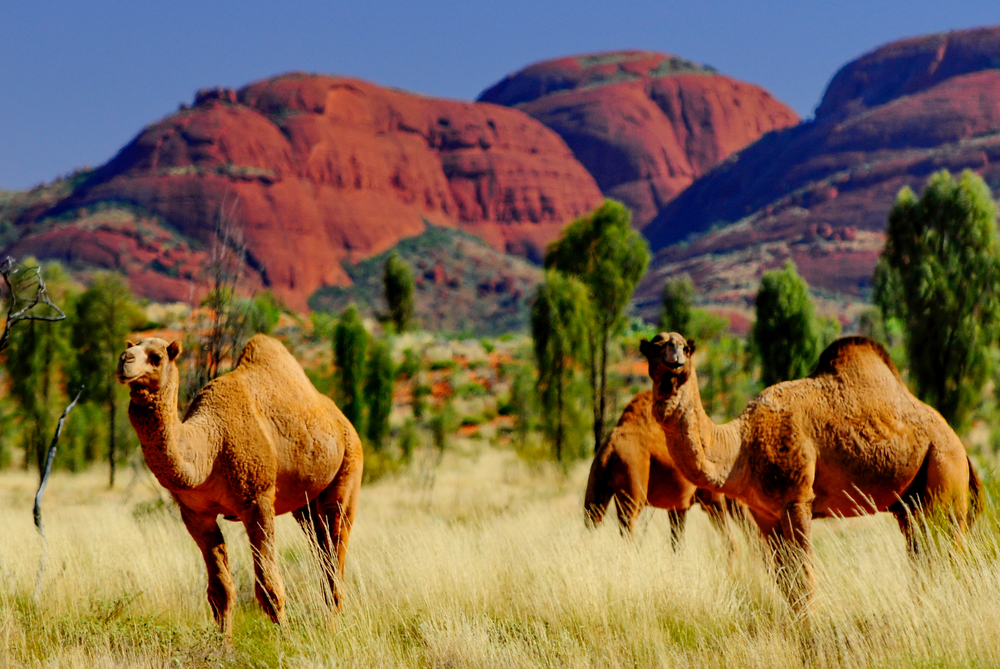
Camels in Australia
Did you know that there are camels in Australia? Did you know that they are a big problem?
How did the camels get here? How did they become wild? What kind of damage do they do and why are people trying to contain them? Where are they located?
Immigration
Australia has come under considerable international scrutiny for their immigration policies that have turned away boatloads of people, drowning many, and which have resulted in containment camps that house people in squalid conditions.
Examine the various sides of the immigration issue in Australia. Why are some people so opposed to immigration? What are Australia’s legal immigration policies? Examine the controversy within the country surrounding the illegal immigration by boat from Indonesia.
What is the situation like for illegal immigrants trapped in these camps in Australia, or on the islands off the northern coast?
Aboriginal Treatment and Rights
The struggle between the two people groups in Australia is not a new one. In recent decades there have been movements to restore Aboriginal lands and increase their civil rights. The history is a long and storied one. However, for the purpose of this project please focus on the situation of Aboriginal people in the here and now.
What are the government policies regarding treatment and rights? What is the general cultural sentiment about the Aboriginal people? What are the realities surrounding their daily life? Are there communities that exemplify the best of Aboriginal cultural restoration and preservation? Where is the situation worst for Aboriginal people? Why is it better or worse in some areas? Who is advocating for Aboriginal rights in Australia right now?
Climate Change
Climate change is affecting Australia, significantly? How, specifically? Are weather patterns changing? Is biodiversity being affected? What are the initial measurable impacts? What are the projections for the future? As one of the landmasses closest to the Antarctic continent, how will Australia be impacted by the melting of the ice shelves if things continue on the path they are on?
Cultural Assignment Options
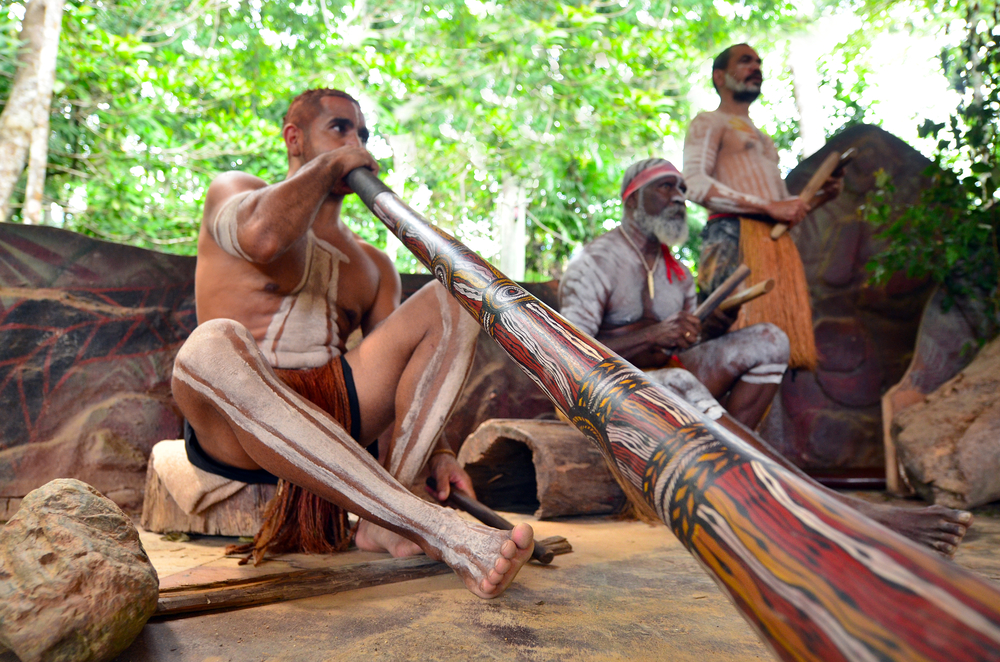
Food
Australia is not one of the countries that leaps to mind when you think of foodie destinations. Most Americans probably think of steak (thanks to Outback Steakhouse) or “Shrimps on the Barbie,” where did that even come from? There is something to those two stereotypes, however, as cattle ranching is big business in Australia’s interior and the whole country is surrounded by the sea, so it stands to reason that fishing is a major industry too. Lamb is another traditional and plentiful meat in Australia, as sheep farming, for wool and meat, has been a backbone of agriculture since early in colonial history.
If you find yourself at a gas station in the outback (or if you really look in a grocery store sometimes) you’ll find a cooler that looks like it might be full of ice cream in a corner. Open it and look inside… long frozen baseball bats?! Nope. Frozen kangaroo tails. Often with the skin and hair still one. Find out how these are cooked, and the story behind the tail being a delicacy. Definitely try some kangaroo meat while you are down under.
More modern treats (and more vegetarian friendly) include TimTams, Vegemite, and fairy bread (try to get yourself invited to a kids party for this one!).
Make a record (or a video!) of all of the new foods you’re trying as you travel through Australia.
Meaningful Connections
What is a meaningful interaction? You get to decide that. In general, it should be an interaction in which cultural exchange took place and you learned something. Often this will be with a local person; sometimes it will be with another traveler.
Sometimes these interactions look like very little on the outside but are totally life changing on the inside. Other times, they are rock your world amazing from every angle. It could be a meal shared, an afternoon’s excursion, a discussion that opens your eyes in some way, a self revelation that happened without any words exchanged at all.
Spend a day with a local individual or family. Document your experience in photos, interviews and the written word. The best way to interact with locals is to just start chatting with them at markets, on tours or on the street. You can also ask other travelers if they have met anyone who has offered some insight into life in the country. If you are a family who have children attending a local school then have a party, invite a parent to coffee, basically just open up your home to new relationships.
Take a Class
There are many options! Don’t be limited by this list:
- Cooking
- Language
- Art or Crafts
- Aboriginal dot painting (in the outback)
- Literature
- Yoga
- Aboriginal Dance
- Music, didgeridoo lessons, perhaps?
Museum Visits
Australia has some fascinating museums, many of them tucked away in tiny places focused on very narrow bands of Australian history or culture. As you travel, keep your eyes peeled for these and spend some time exploring them.
In my opinion, some of the most interesting include:
- The Australian Museum
- The Rocks Discovery Museum
- Australian Maritime Museum
- Melbourne Museum
- RAAF Museum (Melbourne)
- Melbourne Aquarium (good collection of local marine life)
- Sovereign Hill (Ballarat) Living history museum, great for kids
- Burra Town Hall Museum – step back in time and play dress up!
- Daintree Entimological Museum & Rainforest walk
- Reef Teach (this is not a museum but a class on the Great Barrier Reef in Cairns).
- Alice Springs Telegraph Station</li>
- Umoona Opal Mine and Museum (Coober Pedy)
Save your ticket stubs!
Volunteer
Volunteering is a great way to get to know a local community and give back a bit to the places that you choose to travel. There are lots of ways to do this, both organized and arranged privately, as well as impromptu opportunities that will pop up.
If you’re looking for a list of volunteer opportunities in Australia, Volunteering Australia has a site dedicated to helping you find one. Please be advised that TAP is not recommending these, only presenting them as a list of possibilities. Vet your volunteer options carefully.
Live local
Get out of the hostel, rent a place in a local village, or do a homestay. Through websites like Airbnb it’s easy to find places to live locally. Consider a co-living space to develop community with like minded travelers while diving a little deeper and going a little bit more local. T-House, in Cairns, is one option.
Photo essay or a blog description of why living local was different than living in a hostel. How did this experience change the economics of your stay? What did you learn about the way locals live? What challenged you? What would you do differently next time?
Work Stay
Through an organization like WWOOF, HelpX, or Workaway you can arrange for an opportunity to work in exchange for your room and board in a number of capacities, from farm labour to hospitality. Lots of students make use of these experiences to lower the cost of their travels, while at the same time learning valuable skills or “trying out” various career areas that interest them.
Request feedback in the form of a short evaluation that can be used later for a CV or reference
Public Transportation Project
Take as many types of public transportation as possible. The ferries in Sydney are fun, the streetcars in Melbourne are historic and unique. The Ghan train isn’t exactly public transportation, but it’s an icon.
Challenge yourself to take every type of public transportation available while you are in Australia. Create a photo essay or videologue of your adventures. What did you learn?
Attend a Religious Observance
Australia is a very secular society, in the public sphere, but privately, religions of many types are still practiced widely. Most of Australia’s religious history as a result of colonialism is protestant Christian. Before the Europeans arrived, Aboriginal religions provided structure for life, there are pockets of people curating these old beliefs. Islam is a controversial newcomer in Australian culture and is creating some controversy. Take some time to attend various religious observances and see what you can learn. Don’t be afraid to ask questions. How does the religious climate in Australia compare with what you grew up with?
How to Create Your Own Course Work
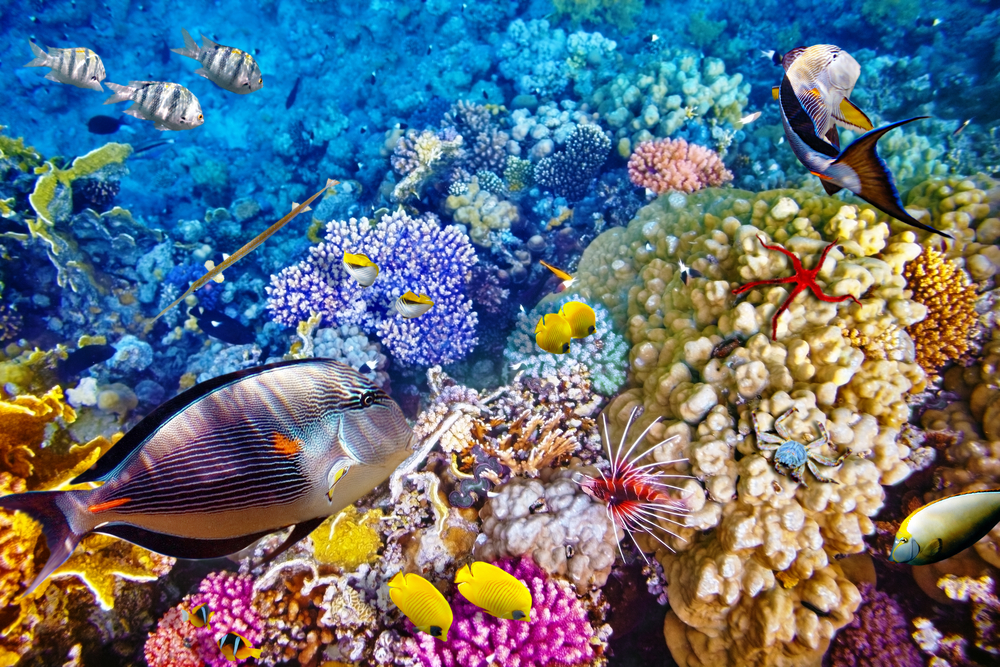
Ask
Learn to ask for what you want. If you meet someone interesting, ask them to teach you. Ask them for an interview. Ask to shadow them for a day or a week. You’ll be surprised at how eager people are to share what they know and teach when someone shows actual interest. Learn to ask questions. Learn to take social risks by putting yourself out there as a learner.
Plan
You have an idea or an interest. Something surprises you on your journey and all of a sudden you have a burning desire to know more. Plan your attack:
- Narrow your field of study to a particular question or topic.
- Compile resources: Look for teachers. Who knows what you need to know? Or who can you interview to learn more? Are there books or videos on the topic you’re interested in?
- Quantify it. How will you demonstrate what you have learned? A research paper, a video project, a photo essay, through art or music, a blog post, a published piece, an interview series, a mini documentary or do you have some other idea?
Produce
Produce a quality piece of academic work that reflects your experiential learning. The whole key to quantifying outside the box learning is to translate it into something that reflects the value of what you learned and how it contributed to your overall educational process.
Perhaps this will be as simple as a traditional research paper, depending on the depth and length of your study this could be as short as three pages or as long as a dissertation. Maybe you’ll produce a video for YouTube, or something grander, like a mini-documentary. Perhaps you’ll do something concrete instead, an art, or community action project and you’ll tell the story through a photo essay, or a series of blog posts. The possibilities are limited only by the resources you have at hand. Get creative. Think outside the box and truly experience your education.
Do You Have Anything to Add to This Resource Page?
We’re actively seeking to grow these resources in an open-source spirit. Please email jenn(at)bootsnall(dot)com with your edits or submissions of new information or materials.
Thank you!
Photo Credit: amophoto_au / Shutterstock.com
